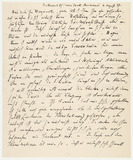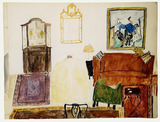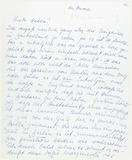Max Beckmann: Der befreite Sträfling [The Liberated Convict], painting, (1937)
Max Beckmann: Der befreite Sträfling [The Liberated Convict], painting, (1937)
This significant and wonderfully coloured painting The Liberated Convict from 1937, the first new self-portrait painted during emigration shows mainly the painter Max Beckmann’s head and hands, his loosened handcuffs and a barred window in the background. Both allude to his past imprisonment and thus also refer to his flight from the country that ostracised him as an artist. In his list of paintings, he set the now familiar title The Liberated in brackets, specifying Liberated Convict as the main title. This is one of the very few paintings in which he clearly alludes to his situation as someone who had been persecuted.
As with other prisoners, his name is shown on his prison outfit, in somewhat distorted form across his shoulder, which can be made out as BECKMANN. His face is illuminated from a strong lateral source of light as well as its weaker reflection on the other darker side; this lighting taken together with the tense expression, the lips pressed resolutely together, the frown and the black barred window set in the rusty brown walls intensify the dark mood of the painting. And render the gesture of the hands, sloughing the heavy chains, more effective.







